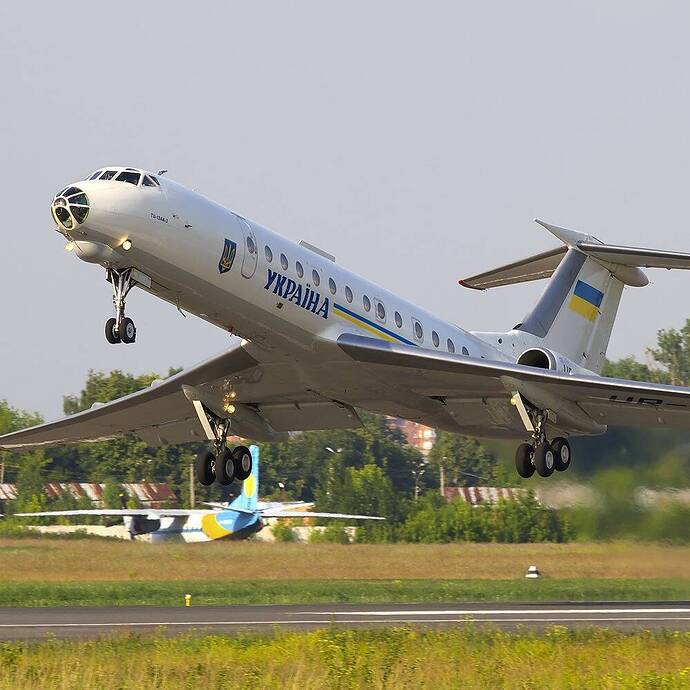AFAIK, virtually all the Soviet commercial aircraft were respins of a corresponding military aircraft.
Example:
Note the bomber nose with the viewport for the bombardier or bomb aimer as was present in the military version.
Also note the “radome” or “elint” pod underneath the nose as would be present in the military version.
This was done to allow re-use of existing airframes with relatively few modifications to make them suitable for passenger use. This reduced the engineering effort and allowed them to bring an aircraft to market in a fraction of the time that a “from scratch” design would require.
One of the side-effects of this was that certain, potentially essential, civilian aircraft design features were not included.
In the illustration above, note the absence of “droops” or slats on the leading edge of the wings.
Many Russian bombers had very long runways that allowed for a higher rotation speed, so leading-edge slats were omitted as a cost-saving measure. Likewise, airframe designs minimized the effects of these feature omissions.
The commercial variants were redesigned to accommodate commercial use by a re-designed/extended cabin, different wing sweep, and other aerodynamic changes that made the absence of leading-edge slats a real problem.
One of the problems this created was that the takeoff and landing speeds for the corresponding commercial aircraft were considerably higher than normal, requiring longer runways and making the craft difficult to handle at the slower speeds that were required for takeoffs and landings. This was particularly aggravated by the extended cabins and modified wing designs in the commercial versions that didn’t have these lift-enhancing features.
In fact, one of the earliest jet powered commercial passenger respins was called “the flying coffin”, (or in some places, “flight to heaven”), and a popular song about the aircraft re-used a familiar funeral tune with the lyrics changed to refer to the aircraft.
====================
With regard to all the “Ukrainian vs Russian” noise that seems to be going on about many of these aircraft:
- All of these aircraft were Soviet aircraft, regardless of where the design groups or manufacturing facilities were located.
- It was not uncommon for high-volume aircraft production to be “farmed out” to a number of different facilities in different regions of the Soviet Union, in the same way that US/Western companies vie for production contracts.
- During WWII, many Lockheed aircraft, the P-38 Lightning among them, were manufactured in a number of different facilities, often run by competitors, (Ford did a lot of aircraft manufacturing, especially at their Willow Run facility).
- As a consequence, it was not uncommon that aircraft subassemblies, (and sometimes entire aircraft), would be manufactured in places like Kurgistan, Georgia, Armenia, Usbekistan, and far-flung parts of Siberian Russia, along with the original facility.
- In some cases the “original” facility was reserved as a scientific research facility, concentrating on design and development, while other facilities, (that were perhaps less engineering oriented?), did the lion’s share of the “heavy lifting”.
As far as everyone was concerned, they were all Soviet aircraft, regardless of where they were manufactured.
